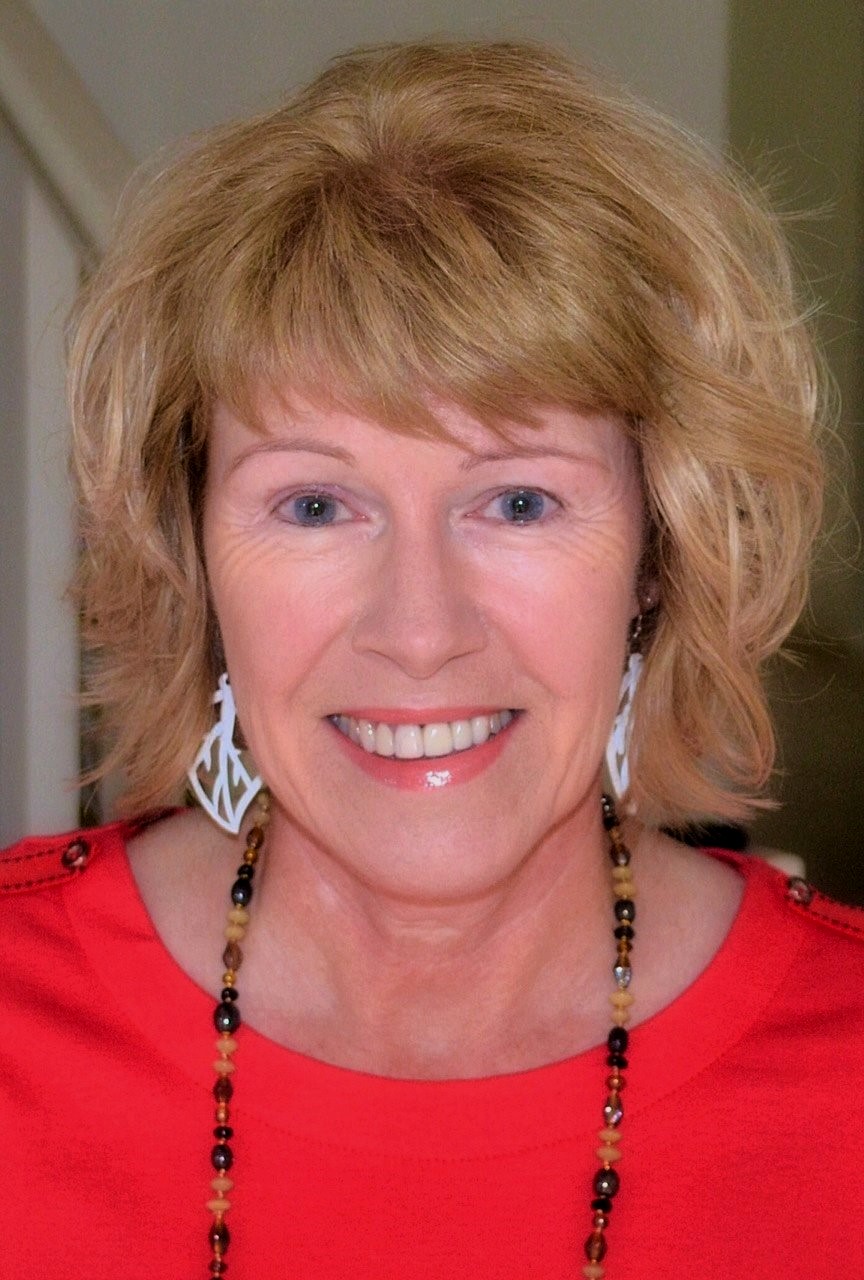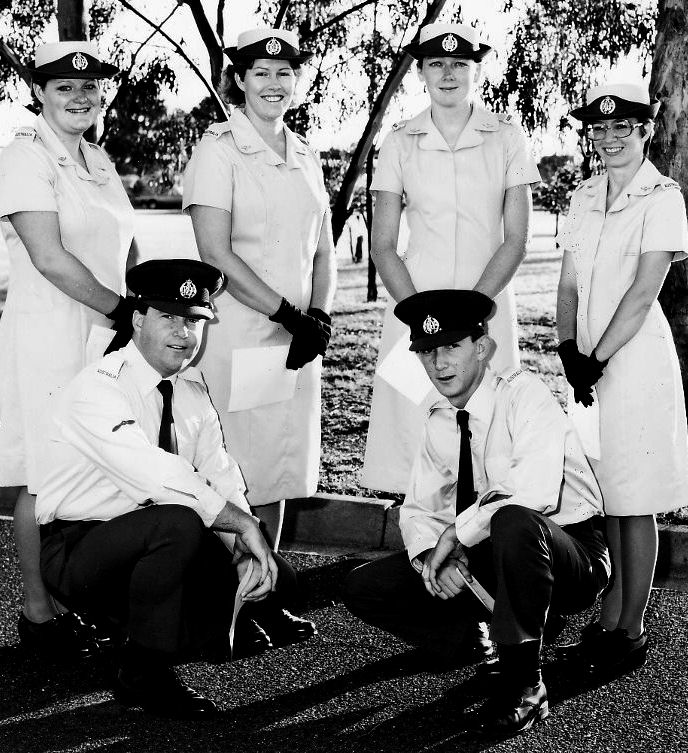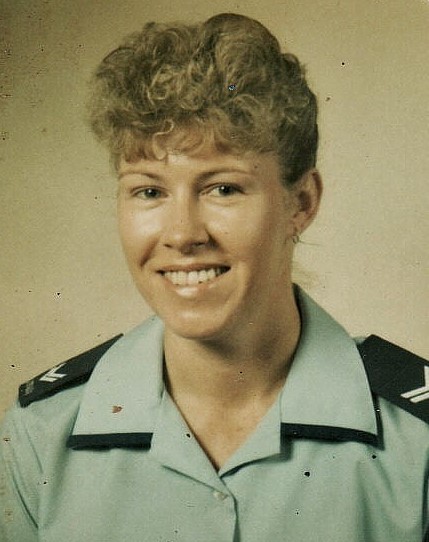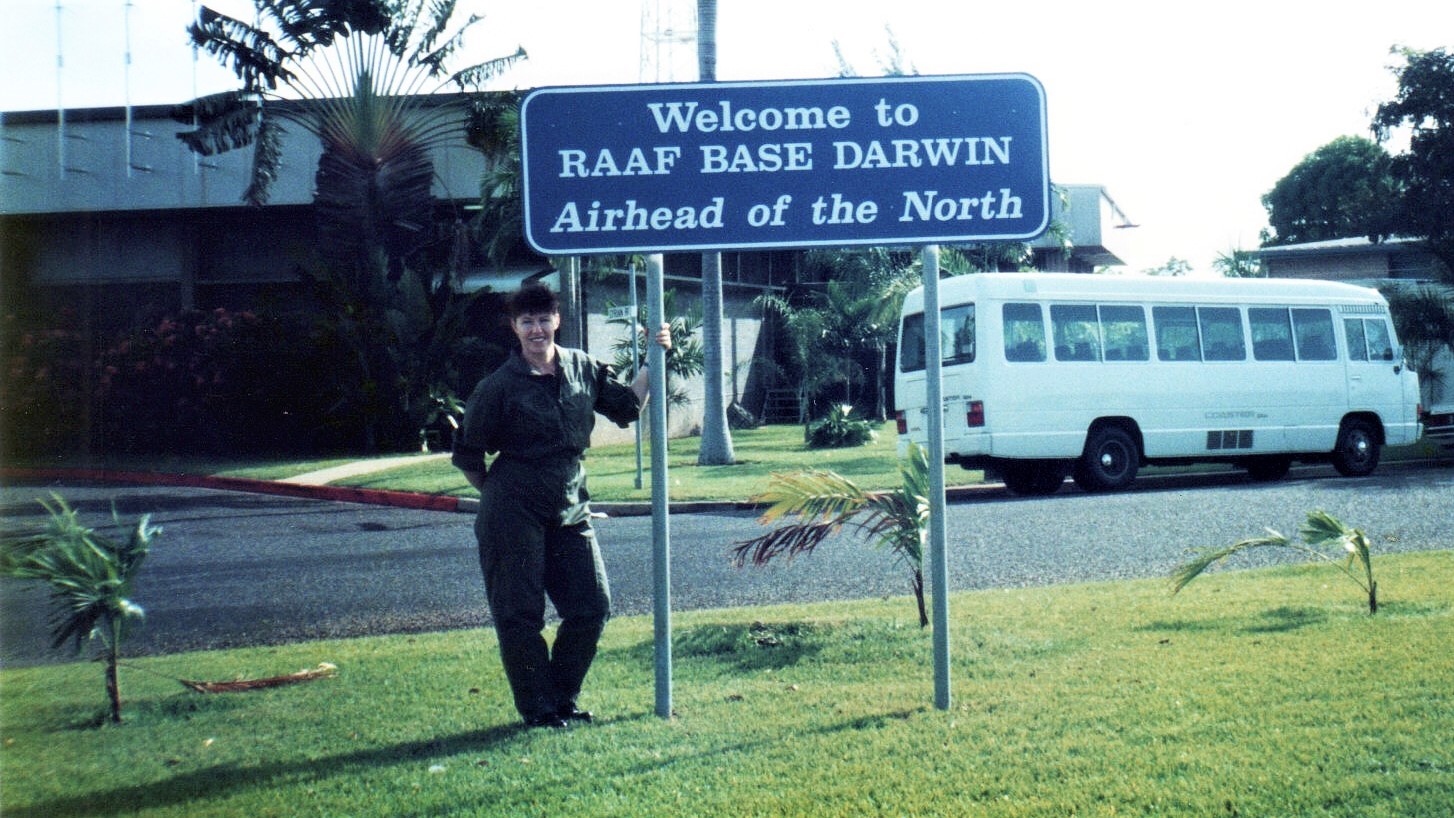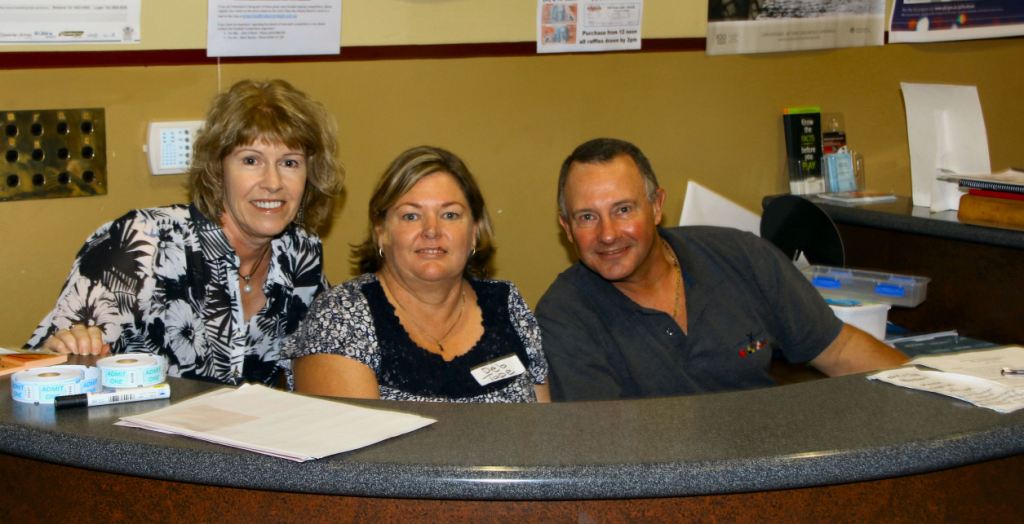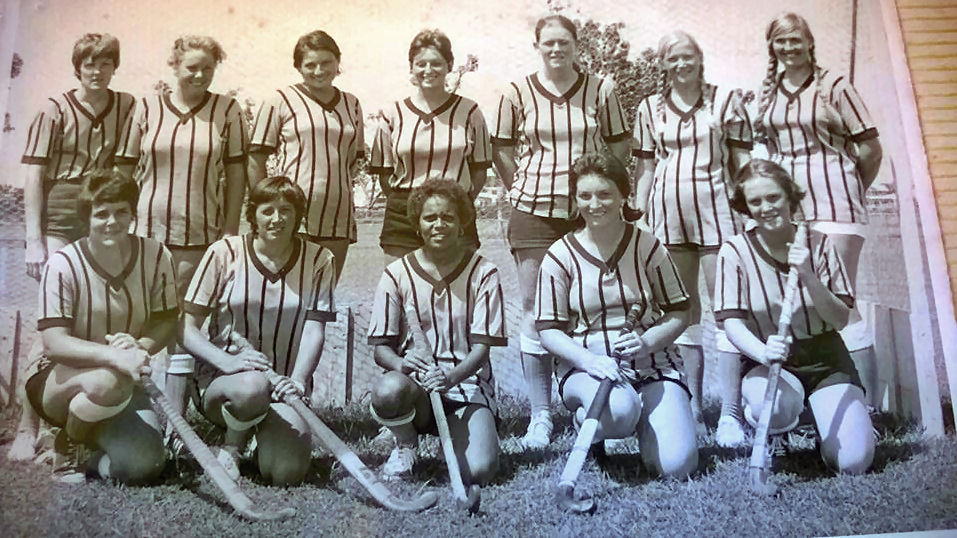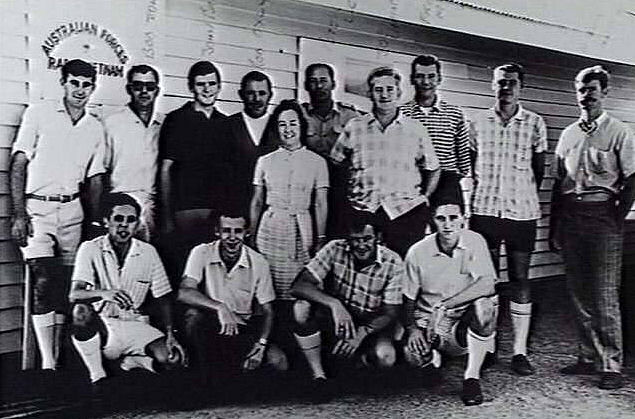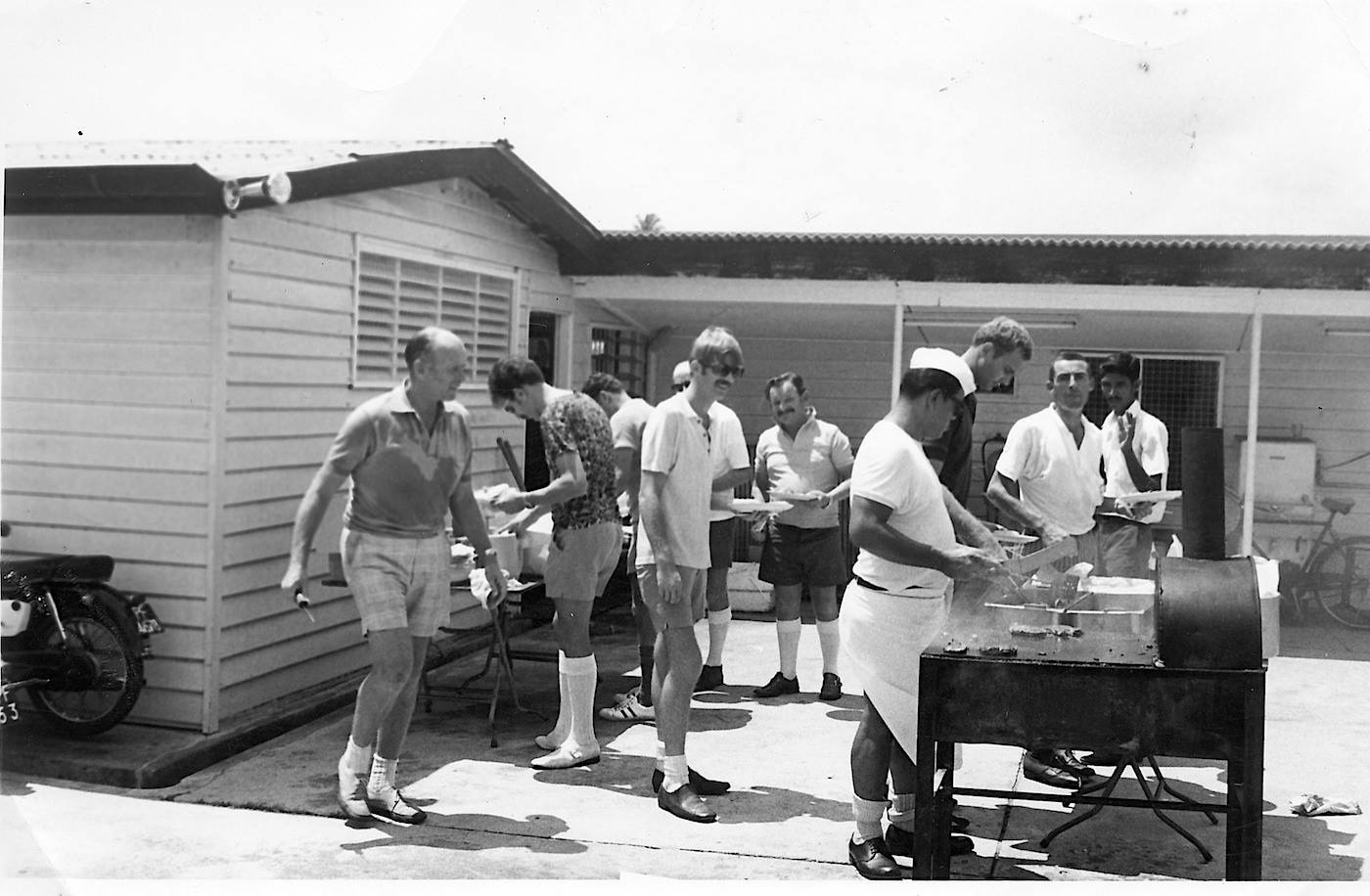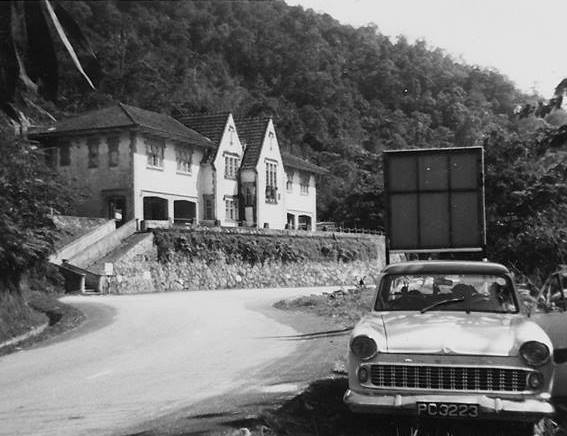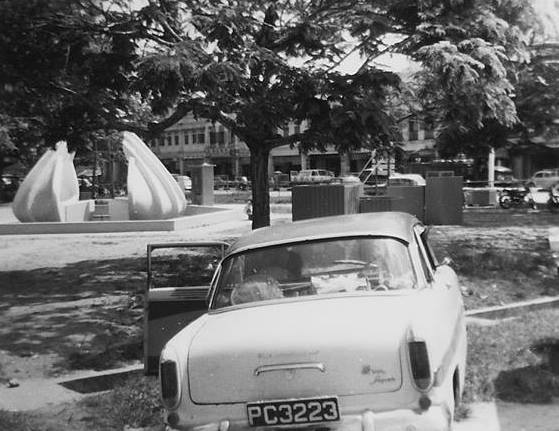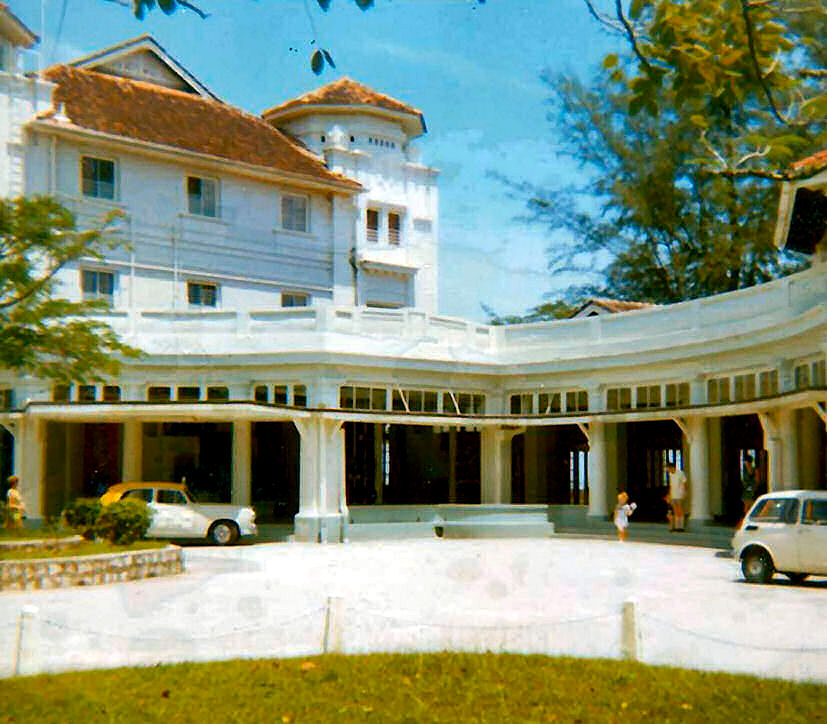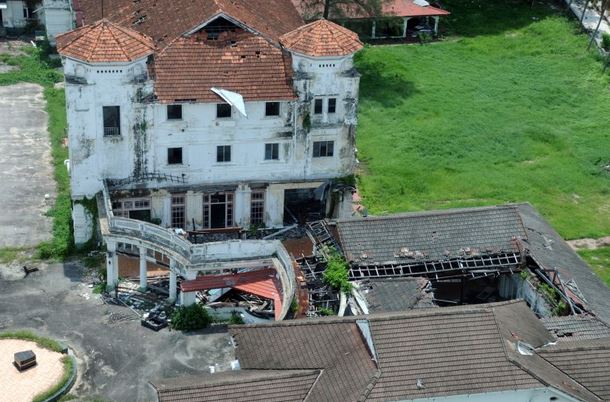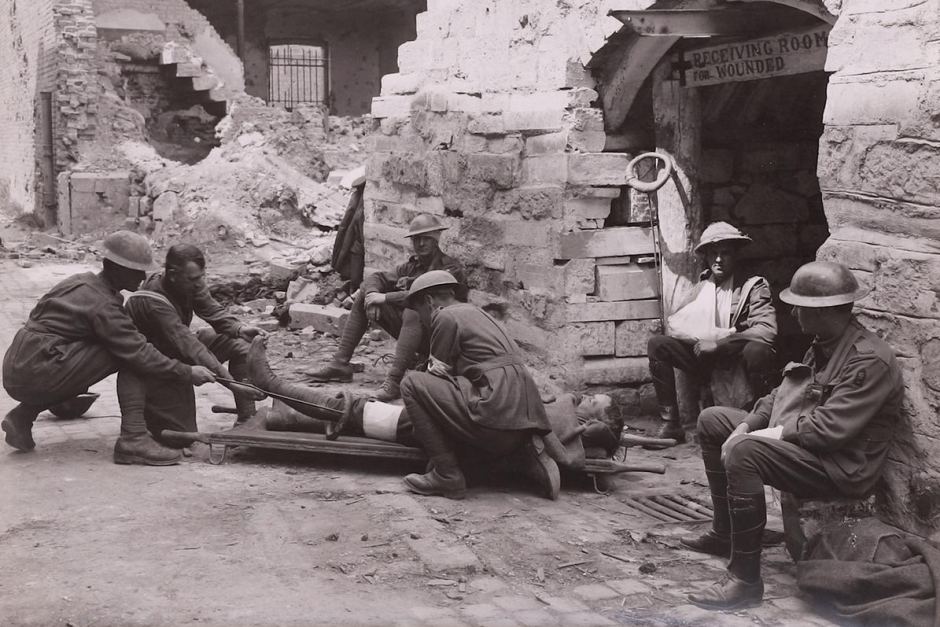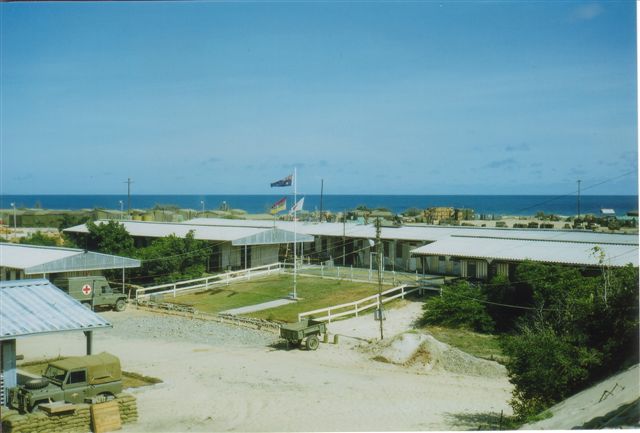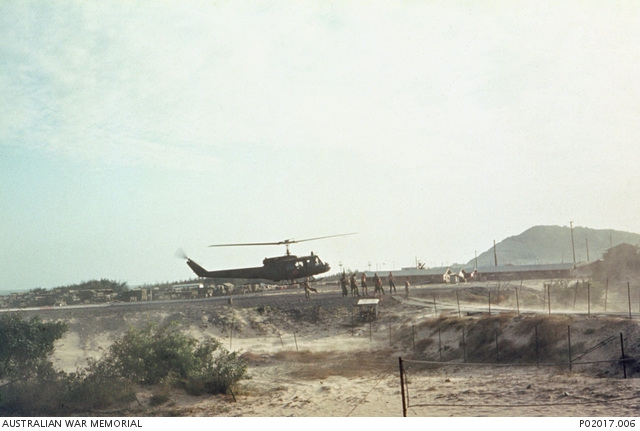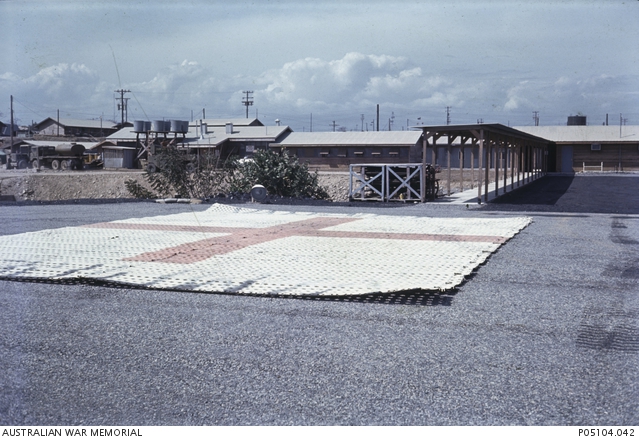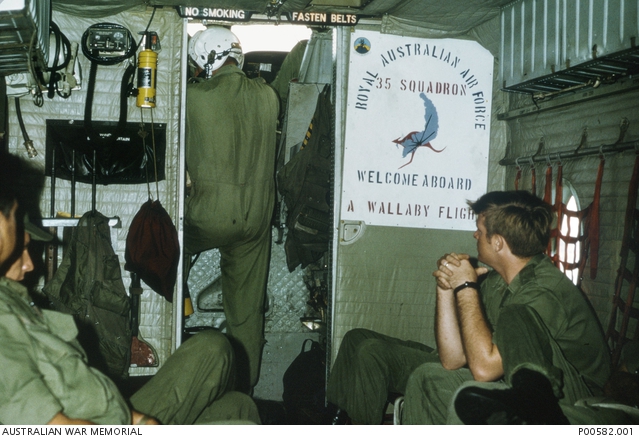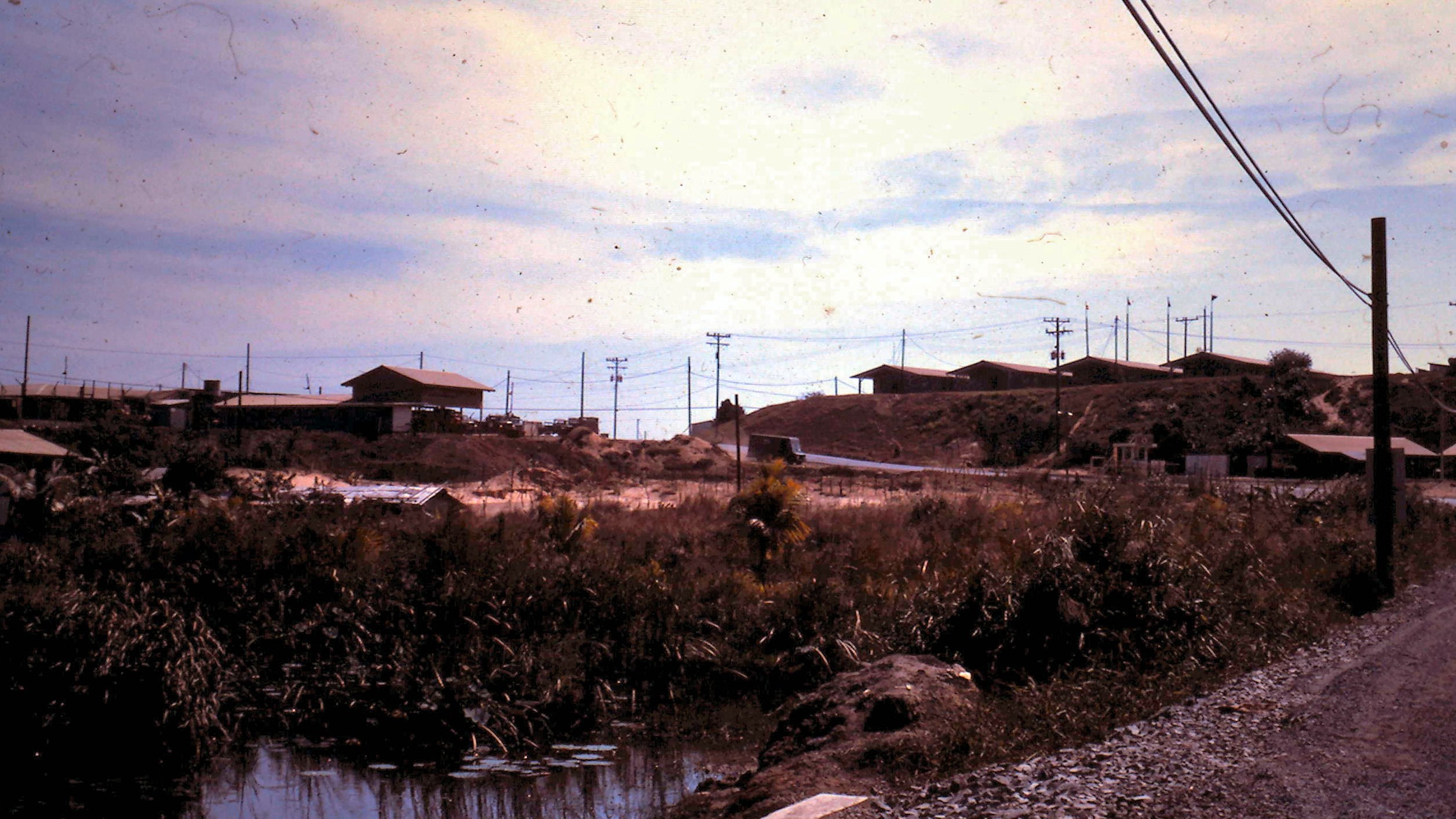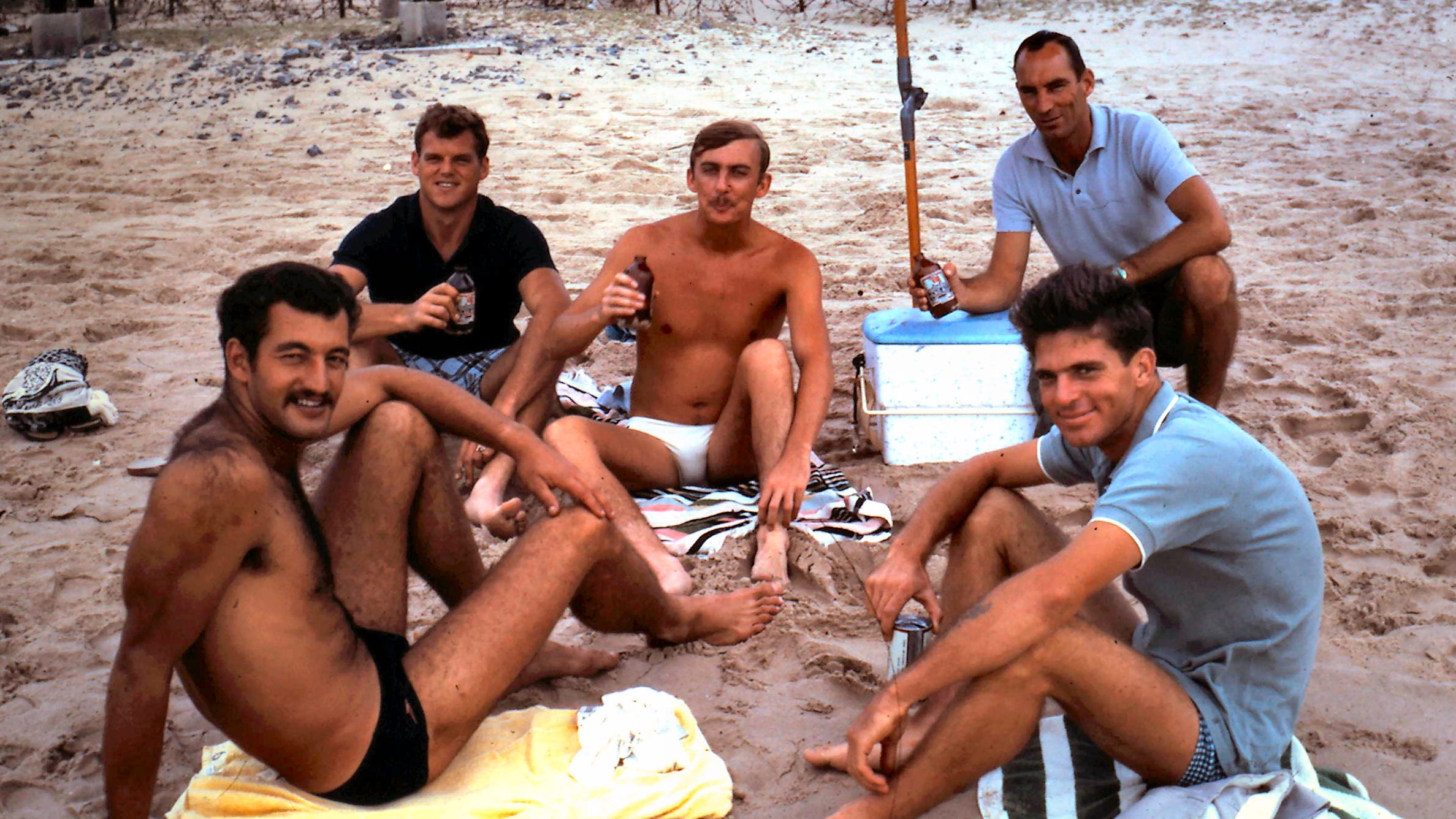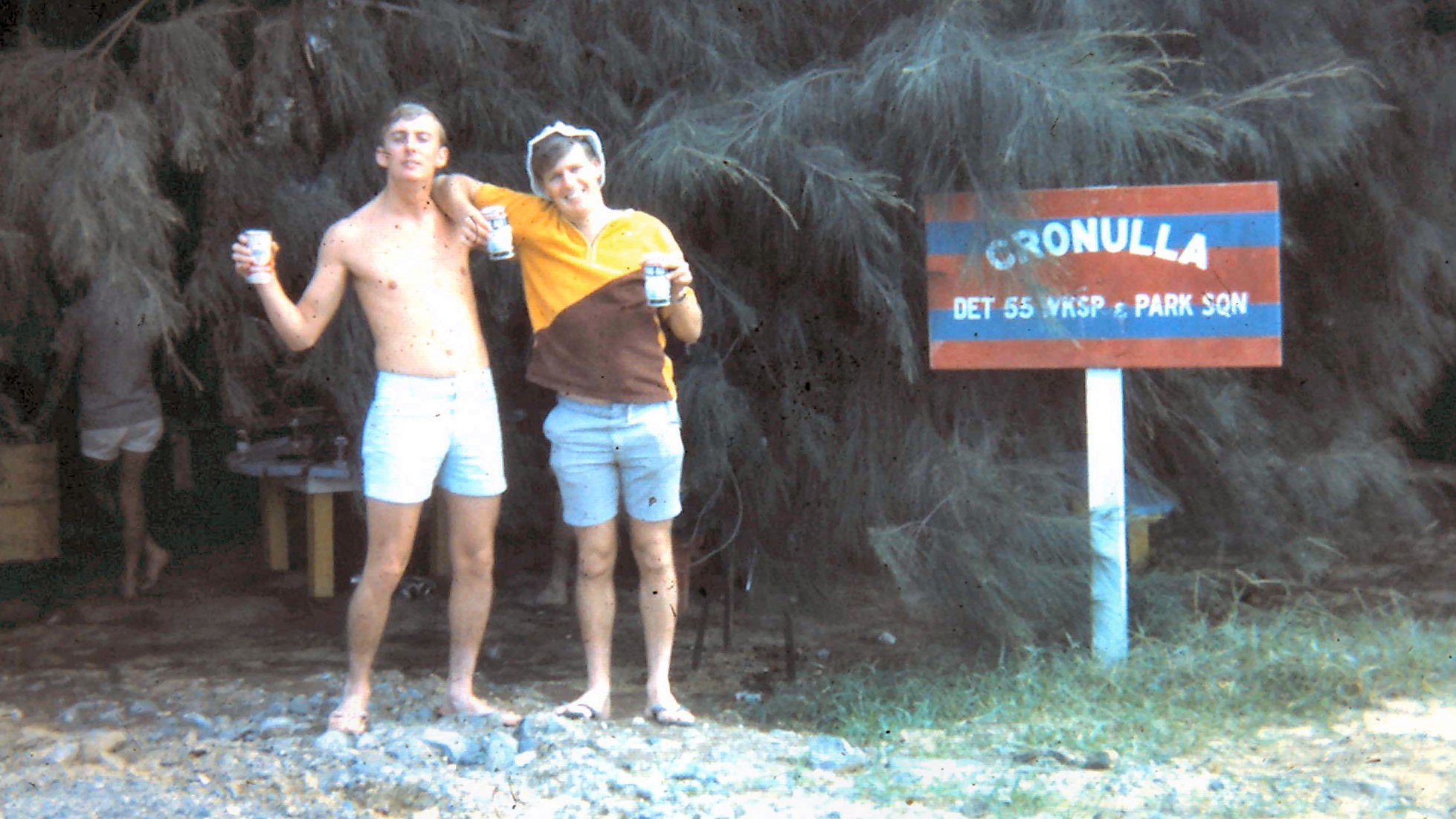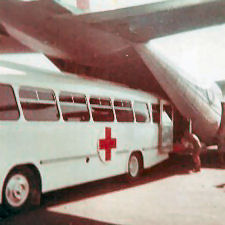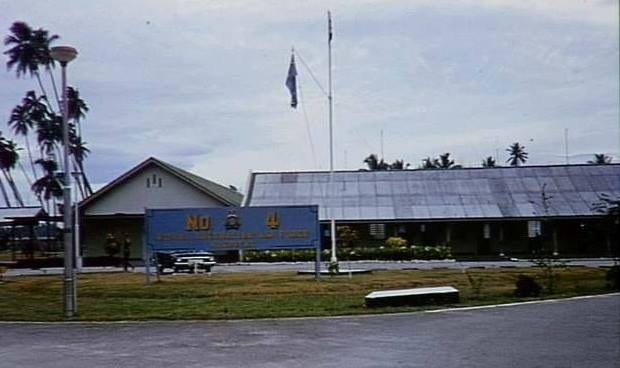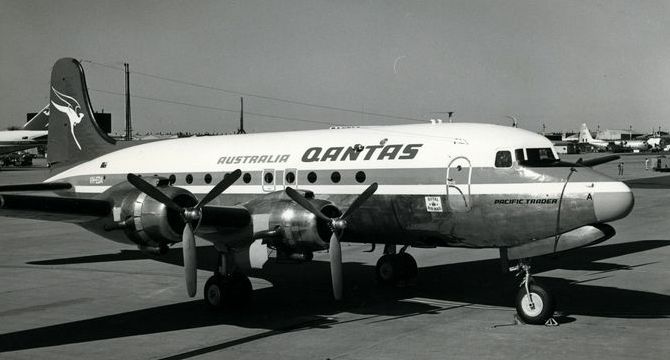|
|
||
|
||
|
Privacy Policy | Editorial Policy | Profit Policy | Join the Association | List of Members | Contact us | Index | Links |
||
|
Back Go to page: 1 2 3 4 5 6 7 8 9 10 11 12 13 14 15 16 17 18 19 20 Forward
|
||
|
Page 3 Girl.
Our lovely Page 3 girl this edition is Gail McDermott.
|
||
|
|
||
|
Gail says: “I joined the RAAF as Gail Predl, at the ripe old age of 28. Not old by normal standards, but quite a lot older than most of my fellow recruits at Edinburgh. To say I enjoyed rookies would be a lie, I didn't like having to study again after so many years away from school. Still I passed everything well and truly. I originally wanted to join as a Police Dog Handler but back in 1986 women were not allowed to do this. Comms was my second choice so after rookies, off I went to Laverton to 5/86 COMMSOP Course.
|
||
|
|
||
|
Standing L-R: Leesa Brennan, Gail Predl (now McDermott), Heather Brock, Lynette Pedersen. Front L-R: Ian Kain, Russell Hicks |
||
|
This training I enjoyed, though again the studying was a pain and I did more than I wanted to in order to ensure I passed. I actually got a Certificate of Outstanding Achievement when I duxed the course. Nobody was more surprised than me.
My first posting was Williamtown where I spent the next 2¾ years. It was a lovely area to have a base. Unfortunately, it was not a 24 hour Commcen and we had a pager for weekend call outs. I spent a few nights sleeping on the floor in the commcen because I got sick of driving in. During my time there, I had the opportunity to go on Exercise to Singapore (where we stayed in 4 star accommodation for about 4 weeks). I was promoted to Corporal and posted to Darwin at the end of 1989.
Darwin Commcen was a very sociable place to work. When I first got there I was in AOCC which I loved. I worked with a really good bunch of people and we had both a great working and socialising life on our days off. During my time there, I was lucky enough to be able to hang out the back of a Caribou as it flew over Kakadu. I also went up in a P3C Orion and sat in a Learjet which towed targets while FA-18 aircraft fired live rounds at the targets. |
||
|
|
||
|
I spent about four years at that Comms Centre and then got posted to the Commcen at HQNORCOM at Larrakeyah Barracks in Darwin. I worked there for two years and it was during this time that I met my now husband (who was in the Navy on one of the Patrol Boats).
We met on Anzac Day in 1996. I was promoted and posted to Wagga at the end of that year. We got engaged and Greg was able to get a posting to Sydney. We drove out of Darwin in December 1996. After we were married the following May, I went on LWOP and moved to Sydney. We could not get posted any closer together than what we were. I finally got out of the RAAF in January 1998 after serving 11½ years. We stayed in Sydney and I got a job working at Nalco Australia. Once Greg was promoted and posted it was time to move on again – this time to The Mornington Peninsular in Victoria. We were there for about 10 months and then Greg got out of the Navy.
We moved back to Brisbane and have been here ever since.
Since arriving in Brisbane I have worked as a telephonist for a courier company that has since closed its doors. I was there for 13 years, working 4 hours per day, 5 days a week.
When that closed down I had trouble finding work due to my age. Eventually after applying for more than 60 jobs I landed one less than 5 mins drive from home. I am a receptionist/admin assistant at a firm of consulting Engineers. I am lucky enough to only work 2 full days a week, and I really enjoy it.
|
||
|
|
||
|
I attended my first Djinnang Association reunion in 2014 (just after losing my job), and had a great night catching up with people I had not seen for 20 years. They were calling for an extra person for the Committee and I could tell nobody was going to volunteer, so I decided I would give it a go. I was told there was virtually nothing for me to do until the next reunion came along. And they were right. Later when the Secretary (Deb Tape) advised us she could no longer be the Secretary it was just easier for me to do it than to look for someone else. I am enjoying being on the Committee but am very glad we have found a new venue for the reunions, and I will no longer have to look for a place." |
||
|
|
||
|
Arguing with a woman is like reading a software licence agreement. In the end you have to ignore everything and click "I agree".
|
||
|
Inter-service Hockey 1976. |
||
|
|
||
|
We don't know the who or the where of this pic, except for one person, Ros Curran (back row, 3rd from left). If anyone knows, please let us know. |
||
|
|
||
|
Group portrait of staff of the Australian Forces Radio Vietnam. 1969. |
||
|
|
||
|
L-R Standing: Graham Tulk, RAAF, librarian; Bob Jones, RAAF, announcer; Keith Cogzell, Australian Army, announcer; Mervyn Joseph Loxley, Army, announcer; Mary Gaynor, Royal Australian Army Nursing Corps (RAANC), announcer; Peter Long, station manager; Joseph Chamberlain, technician; Frank McCarthy, RAAF, announcer; Harvey Lloyd, announcer; Hank Van Dartel, Australian Army, announcer. L-R Squatting: Ray N Jennings RAAF, senior announcer; Kevin Routlidge, RAAF, announcer; William Parsons, RAAF, librarian; John Hawkes, librarian.
Ray Jennings had previously served as senior announcer between 1966-1968 at Radio RAAF Butterworth in Malaysa
|
||
|
Golf Day Butterworth - 1971 |
||
|
|
||
|
Does anyone know anyone?? |
||
|
Cameron Highlands, Malaysia. |
||
|
|
||
|
|
||
|
|
||
|
Runnymede Hotel, Penang. |
||
|
|
||
|
Above, the well-known Runnymede Hotel on Northern Road, Penang as it was in 1971, sadly has seen better days.
This hotel, which would have been well known to most people who were posted to Butterworth, was built in 1807 and was originally the private home of Thomas Raffles (of the Singapore hotel fame). The property was named “Runnymede” after the English field in which King John signed the Magna Carta. Originally a single story building with louvered wooden window shutters, carved balconies, deep cool eaves and large, relatively open living spaces, it burnt to the ground in 1901 and was rebuilt as a hotel to rival the East and Orient Hotel. .
The British Navy took over the hotel in 1940, to house fleeing Europeans. After the war, the British Military occupied the buildings and in 1951 bought Runnymede for $1.5 million for use as continued military occupation. With Malaysia's Independence in 1957, the British sold Runnymede for a token sum of $1.00.
The Malaysian Ministry of Defence took over the buildings in 1986 and it was used as a military base until 2000 when the land fell into the hands of a developer through a land swap deal between the ministry and the developer. After the military moved out, they left the buildings vacant and initially they were in charge of its upkeep it but in recent years, it has fallen into disrepair. |
||
|
|
||
|
Now, almost a century after it was built, the building has been left vacant, forlorn and almost forgotten as its structure deteriorates from neglect; creepers are growing everywhere and the once-gleaming wooden floors are now dull, covered in layers of dust, debris and rotted in parts.
Parts of the tiled roof of the main three-story building with its sweeping staircases, louvred window shutters and detailed colonial architecture have collapsed and many parts of the walls, windows and roof are in various stages of decay.
The building is categorised as a heritage building category two which means the owner is not allowed to demolish it under the local Town and Country Planning Act.
There are plans to resurrect the Hotel but as yet nothing has happened.
|
||
|
Never make a woman mad. They can remember stuff that hasn't even happened yet. |
||
|
A way home from Vietnam.
During the Vietnam War, seriously injured ADF personnel were first treated by their local Aid Posts then medivaced to the Back Beach Hospital in Vung Tau. The hospital, which was situated at the 1st Australian Logistic Support Base, was operated by the 8th Field Ambulance, a medical unit of the Australian Army. This unit was originally formed during World War I as part of the Australian Imperial Force and served mainly on the Western Front between 1916 and 1918, before disbanding in early 1919. During World War II, the unit was re-raised as a Militia unit and served in Western Australia, New Guinea and Bougainville before being moth-balled again at the outbreak of peace.
In early April 1966, the unit was again raised from the ashes with the intent to deploy to South Vietnam as part of Australia's contribution to the Vietnam War and was based initially at Puckapunyal in Victoria. The unit was staffed primarily by Citizens Military Force (CMF) medical officers on full-time service. A year-long period of training followed before the unit finally deployed, arriving at Vung Tau in late April 1967 and taking over from the 2nd Field Ambulance. Forming part of the 1st Australian Logistic Support Group, the unit's main force of about 100 personnel established a field hospital capable of supporting about 50 patients. A smaller team of around platoon-strength deployed forward inland, working directly with the 1st Australian Task Force's deployed infantry battalions at Nui Dat. In 1968, the field hospital was redesignated the 1st Australian Field Hospital as the medical services in Vietnam were expanded, although the forward medical detachment retained the 8th Field Ambulance designation. It was subsequently disbanded in 1972 following the conclusion of its tour.
|
||
|
|
||
|
1st Australian Field Hospital, Back Beach, Vung Tau. |
||
|
During the war, injured ADF persons were medivaced to “Back Beach” either by helicopter (called a ‘dust off’) or by Caribou and once stabilised, were transported to Vung Tau airport where they were repatriated by Herc to (usually) 3 RAAF hospital at Richmond, via an overnight stay at the 4 RAAF Hospital at Butterworth.
|
||
|
|
||
|
A 9 Sqn Iroquois dropping off medivacs at Vampire Pad at the Back Beach Hospital. Run your mouse over the pic to see what the chopper pad looked like in 2006.
|
||
|
|
||
|
The Chopper Pad at Back beach, 1969. |
||
|
|
||
|
|
||
|
Patients able to walk were transported by Caribou.
|
||
|
|
||
|
Entrance to the 1st Australian Logistic Support Base (Back Beach) 1969.
|
||
|
The Army base at Back Beach was also an R&C centre for Army personnel and RAAF personnel working at Vung Tau airfield would use it to let their hair down on days off. |
||
|
|
||
|
Clockwise from the left: Wally Salzmann (Framie), Bob Anderson (Sumpie), Nidge Murray (Clock winder), Ken Radford (Framie), Ken Matthews (Framie). Back Beach Duty Crew barby.
|
||
|
|
||
|
L-R: Nidge Murray, Allan Shaw, at a Back Beach beer and barby after a 7 day Duty Crew shift. (Tooheys Flag ruled.) Run your mouse over the pic to see what Back Beach looked like in 2006.
|
||
|
Once patients were stabilised and able to handle the long trip back to Australia, they were transported from Back Beach to Vung Tau airfield for loading into the waiting Herc, initially the A models from 36 Sqn but later the quieter and faster E models from 37 Sqn. The Army had a modified bus which would back up to the Herc and allow patients to be carried direct into the aircraft.
The RAAF had a roll on, roll off container which sat in the middle of the aircraft and which was, in effect, a mobile operating theatre. If needed, patients could be moved into the container and “worked on” by the on-board doctor and nursing sisters.
Because the trip from Vung Tau back to Richmond, via Herc, was a marathon in itself, the trip was broken up and patients were overnighted at the RAAF’s 4 RAAF Hospital at Butterworth. |
||
|
|
||
|
4 RAAF Hospital, Butterworth. 1966. 4 RAAF Hospital was established in 1964 and was disbanded in July 87. After spending a night at 4 RAAF, patients were loaded back onto the Herc and flown to Richmond, a 7,000 klm journey.
|
||
|
Every-time you talk to your wife, your mind should remember that....."This conversation will be recorded for training and quality purposes." |
||
|
|
||
|
The history of the Medivac.
SQNLDR Frank Kiel, RAAF Medical Officer 1942-47
Since WW1, aeromedical evacuation (medivac) has evolved from a concept to a major Air Force capability. Tactical medivac, which is the evacuation of wounded from the place of injury to medical facilities within the Area of Operations (AO), has been carried out by various military services since World War I; however, strategic medivac (from the AO back to permanent facilities in Australia or another allied country) had to wait for the development of longer range aircraft in World War II.
Prior to World War II, Air Force medivac flights were carried on an ad hoc basis with improvised equipment when suitable aircraft were available. When the Second Australian Imperial Force (2 AIF) deployed to the Middle East in 1940, the great distances within the AO and the scarcity of medical facilities demanded a rapid means of evacuating wounded soldiers. To meet this demand, the Air Force raised No 1 Air Ambulance Unit (1AAU) at RAAF Laverton, equipped with three DH-86 Express former airliners. These four-engined aircraft were fitted for aerial ambulance work under the supervision of FLTLT George Simpson, a former doctor with the Royal Flying Doctor Service (RFDS). The unit flew its first medivac mission in the Middle East on 3 August 1941 and supported the British Eighth Army in its campaigns across North Africa, Sicily, Malta and Italy, evacuating 8252 patients to safety.
RAAF nursing sister and medical orderly attend patients in World War II medivac Dakota.
In the Pacific theatre, No 2 Air Ambulance Unit (2AAU) flew its own Hudson, Gannet, Dragon and later Dakota aircraft on missions evacuating wounded from Papua New Guinea (PNG) to Australia. By 1943, the large number of casualties from heavy fighting required an expansion of the medivac organisation; however, under the Geneva Conventions, dedicated air ambulance aircraft displaying the Red Cross insignia could not be used to carry any non-medical equipment or personnel. Any increase in the number of dedicated air ambulance aircraft would have reduced the Air Force’s air transport capacity at a time when it was needed most, therefore, the expansion was not undertaken.
The solution was to form units of medivac-trained personnel who utilised any available aircraft to conduct medivacs. From late 1944, No 1 Medical Air Evacuation Transport Unit (1MAETU) at Lae, PNG, 2MAETU at Morotai in the Dutch East Indies and 3MAETU at Townsville formed a chain to evacuate patients from the South-West Pacific battle zones to major hospitals in Brisbane. Evacuations from coastal and island locations were often conducted using Sunderland or Catalina flying boats, but the majority of medivacs were done using the faithful Dakota aircraft. Medical units at major airfields cared for the patients between flights. Thus, by late 1944, the Air Force was operating a major strategic medivac organisation that carried more than 14,000 patients to medical care in Australia. The medivac role was not without risk though, as several flights and their crews and patients were lost in accidents.
With the end of hostilities in August 1945, thousands of Prisoners of War (POWs) needed medical care and rapid transport to long-term medical facilities in Australia. Every available aircraft was used for medivac – Liberators, Catalinas and Dakotas. Singapore quickly became the evacuation base, with a hospital set up by Air Force and Army medical staff. Approximately 7,800 POWs of all nationalities were evacuated by Air Force units from Singapore to Australia.
During the Korean War, the Air Force used Dakota aircraft from No 30 Communication Unit, later renamed 36SQN, to evacuate wounded Commonwealth personnel from Korea back to Iwakuni, Japan. After stabilisation, the wounded were often flown back to Australia on chartered Qantas DC-4 aircraft with a RAAF nurse and medical orderly accompanying the patients on the 27-hour journey.
In peacetime, the Air Force has often been called upon to medivac civilians. RAAF Catalina flying boats carried badly injured people from islands and isolated coastal communities to major cities. On 9 April 1955, a 10SQN Lincoln bomber carrying a sick baby from Townsville to Brisbane, crashed into the side of Mt Superbus in south-east Queensland, killing the crew of four, the baby and a civilian nurse.
In 1962, Iroquois helicopters introduced a new medivac capability to the Australian Defence Force (ADF). The ADF’s first operational experience in helicopter medivacs came in 1964 when 5SQN Iroquois supported Commonwealth operations against Communist insurgents in Malaya. The lessons learned in the jungles of Malaya were put to the test in Vietnam where 9SQN crews flew in excess of 4,000 medivac – code named ‘dust-off’– missions to bring wounded soldiers back to medical facilities at Vung Tau or Bien Hoa. An Air Force or Army medical orderly usually accompanied each dust-off flight.
As well as providing a huge increase in airlift capability, the C-130 Hercules aircraft was a major advance in aeromedical evacuation. Faster, with longer-range and pressurised, the Hercules could fly medivac missions that were impossible in earlier transport aircraft. During the Vietnam War, wounded soldiers in field hospitals were evacuated to Australia by C-130 usually with an overnight stay at No 4 RAAF Hospital at Butterworth. Many Air Force medical personnel also gained experience with a United States Air Force medivac squadron at Clark Air Force Base, Philippines.
Air Force medivac team prepare for mission in a C-17 in September 2008.
During 12 years of combat operations in the Middle East, the wounded were evacuated from the battlefield to in-theatre medical facilities by various Coalition aircraft including helicopters and C-130s. After stabilisation, they were evacuated to Australia using the regular strategic airlift flights that had brought personnel and supplies to the Middle East. Initially, these utilised C-130 aircraft but later evacuations were done on chartered civil aircraft, regular airline flights and C-17 flights.
On all flights back to Australia, an Air Force medivac team accompanied the patients. Over 90 years of operations, the Air Force has developed extensive medivac experience and capability, which will be crucial to the treatment of the injured in future operations. Following any natural disaster or any other emergency, carrying out mass medivacs will be an important Air Force contribution to the civil community. |
||
|
|
||
|
Some things are just better left unsaid. And I usually realize it right after I say them. |
||
|
|
||
|
|
||
|
|

